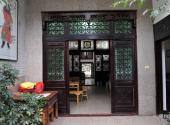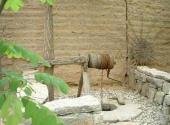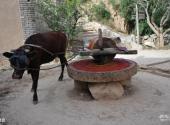
Scenic spot introduction:
The Loess Folk Village occupies an area that is said to be the residence site of skilled craftsmen during the construction of the Qianling Mausoleum in the Tang Dynasty. It was later restored and became a summer resort for the royal family and dignitaries. The more than 2,000-meter-long loess "Dragon Cave" in the Qianling Loess Folk Village is winding and winding, like an underground corridor. It displays in an orderly manner the reproduction of the descendants of the Yan and Huang Dynasties, weddings and funerals, birthday celebrations, traditional etiquette, and seasonal activities in the Guanzhong area. Cultural entertainment, market trade, farming and hunting, clothing, food, housing, transportation and other folk objects or statues, and there is an underground restaurant in the "Dragon Cave" corridor. The content is very rich, focusing on the folk culture of the Guanzhong area in the Yellow River Basin. and loess style.Attractions distribution:
The Loess Folk Village covers an area of more than 30,000 square meters. It is the site where skilled craftsmen lived when the Qianling Mausoleum was built. The empress Wu Zetian once stopped here when she inspected the Qianling Mausoleum. She was amazed by the charm of cave dwellings. After repairs, the emperor's relatives and relatives When worshiping the Qianling Mausoleum, many people come here to relax and escape the summer heat, and feel the fun of warm winter and cool summer in this geomantic treasure land. Among them, a more than 2,000-meter-long loess "dragon cave" is naturally formed, which resembles a "dragon vein" and affects the "dragon head" of the eighteen tombs of the Tang Dynasty - Qianling Mausoleum. It swings leisurely and is a spectacle. The existing cave dwellings and loess "dragon caves" have been restored and reused with huge investment from foreign investors, which showcase the folk customs and the mystery of the origin of cave culture that have been inherited and thrived by the descendants of the Yan and Huang Dynasties for five thousand years. In the colorful folk performances, you can personally feel the rough and bold, simple and honest folk atmosphere unique to the loess. Entering from the entrance of the loess cave, there is no astringent or earthy smell at all. Under the bright lights, the clean, winding paths can be described as secluded. The earthen huts and earthen kangs are clean and tidy, and the figures carved in clay are in various poses, reflecting the unique folk customs of the time.Scenic spot qualifications:
National 2A-level scenic spotScenic spot features:
Leisure, vacation, folk customs tour, architectural landscape tour, ancient buildings, folk villageAttraction Address
Travel Guide
Best time to visit:
Spring and autumn seasons.
Shopping recommendations:
(Local specialties) native cloth, persimmon, apple, apricot, fabric, and jujube.
(Special delicacies) Qianzhou chicken noodles, horse oil cakes, noodles in sour soup, Qianxian tofu brain, and Guokui.
Tourist Transportation
Scenic spot location:
China>Shaanxi Province>Xianyang City>Qian County
How to get there:
You can take bus No. 3 in Xianyang City directly to the scenic spot.
Scenic area map:
Click to expand the scenic area map
Attraction Tickets
Xianyang Folk Village ticket price:
The ticket price is 25 yuan.
Scenic area opening hours:
8:00-18:00






